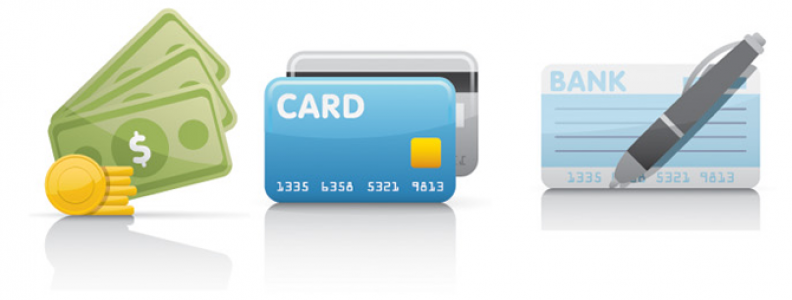Statement of Cash Flows: Free Template & Examples
Content
- Cash flow from investing activities
- What is negative cash flow?
- Statements of cash flow using the direct and indirect methods
- Join over 140,000 fellow entrepreneurs who receive expert advice for their small business finances
- EFRAG endorsement status report 17 July 2023
- 4 – A brief on the financial statements

The following sections discuss specifics regarding preparation of these two nonoperating sections, as well as notations about disclosure of long-term noncash investing and/or financing activities. Essentially, the cash flow statement is concerned with the flow of cash in and out of the business. As an analytical tool, the statement of cash flows is useful in determining the short-term viability of a company, particularly its ability to pay bills. International Accounting Standard 7 (IAS 7) is the International Accounting Standard that deals with cash flow statements.
Is cash flow statement easy?
The cash flow statement is believed to be the most intuitive of all the financial statements because it follows the cash made by the business in three main ways: through operations, investment, and financing.
If possible, keep a copy of your income statement and balance sheet nearby to plug in your available cash across all of your financial statements and are ready to prep for the next reporting period. A cash flow statement lists the cash inflows and outflows of cash for a period of time, and the ending cash balance is the same dollar amount reported on the balance sheet. The direct method uses actual cash inflows and outflows from the company’s operations, and the indirect method uses the P&L and balance sheet as a starting point. The latter is the most common method encountered since the direct method requires a granular level of reporting that can prove more cumbersome. No matter which method you choose, only the operating activities section of your cash flow statement will be affected.
Cash flow from investing activities
As we have seen from our financial model example above, it shows all the historical data in a blue font, while the forecasted data appears in a black font. The table below serves as a general guideline as to where to find historical data to hardcode for the line items. After enrolling in a program, you may request a withdrawal with refund (minus a $100 nonrefundable enrollment fee) up until 24 hours after the start of your program.
Over the last few chapters, we have discussed the company’s three important financial statements, i.e. the P&L statement, the Balance Sheet and the Cash Flow statement of the company. While the Cash flow and P&L statement are prepared on a standalone basis (representing the given year’s financial position), the Balance Sheet is prepared on a flow basis. Now think about the cash moving in and out of the company and its impact on the cash balance. For example “Upgrade the sound system for a better workout experience” means the company has to pay money towards purchasing a new sound system. It is also interesting to note that the new sound system itself will be treated as a company asset.
What is negative cash flow?
The overall impression from the Cash Flow Statement raises concern regarding Acme Manufacturing’s ability to pay its short-term liabilities (including payments due creditors). Cash changes from investing are generally considered “cash outflows” because cash is used to purchase equipment, buildings, or short-term assets. When a company divests an asset, the transaction is considered a “cash inflow.” A healthy company generally invests continually in plant, equipment, land and other fixed assets. Most of these adjustment items can either result in an increase or decrease in cash from operating activities. Exceptions would be adjustments for depreciation and amortization, which are always an increase to Net Income on the Cash Flow Statement. If all of a company’s operating revenues and expenses were in cash, then Net Cash Provided by Operating Activities (Cash Flow Statement) would equal Net Income (Income Statement).
- Propensity Company had a decrease of $1,800 in the current operating liability for accounts payable.
- While it’s also important to look at business profitability on the income statement, cash flow analysis offers critical information on the financial health of a company.
- While each company will have its own unique line items, the general setup is usually the same.
- Organizing your financial statements is even more important as your small business begins to scale into a midsize company.
- Companies generally aim for a positive cash flow for their business operations without which the company may have to borrow money to keep the business going.
B) Interest costs (rates) are incurred by a company when owned or borrowed funds are invested in durable assets, because such money is tied up and cannot be used for other purposes. On borrowed money, there will be a regular interest payment, a standing obligation which must be met regardless of the level of use of the asset purchased with the borrowed money. An annual charge should be made because the money invested has alternative productive uses, which may range from earning interest on a savings account to increasing production. Increase in Accounts Receivable is recorded as a $20,000 growth in accounts receivable on the income statement. Keep in mind, with both those methods, your How Much Should I Charge for Bookkeeping Services? Averages & More is only accurate so long as the rest of your bookkeeping is accurate too. The most surefire way to know how much working capital you have is to hire a bookkeeper.
Statements of cash flow using the direct and indirect methods
Financing net cash flow includes cash received and cash paid relating to long-term liabilities and equity. Investing net cash flow includes cash received and cash paid relating to long-term assets. The P&L statement discusses how much the company earned as revenues versus how much the company expanded in terms of expenses. The company’s retained earnings, also called the surplus of the company, are carried forward to the balance sheet. The depreciation mentioned in the P&L statement is carried forward to the balance sheet.

Cash and cash equivalents are consolidated into a single line item on a company’s balance sheet. It reports the value of a business’s assets that are currently cash or can be converted into cash within a short period of time, commonly 90 days. Cash and cash equivalents include currency, petty cash, https://kelleysbookkeeping.com/best-accounting-software-for-quicken/ bank accounts, and other highly liquid, short-term investments. Examples of cash equivalents include commercial paper, Treasury bills, and short-term government bonds with a maturity of three months or less. Investing activities include any sources and uses of cash from a company’s investments.





Responses